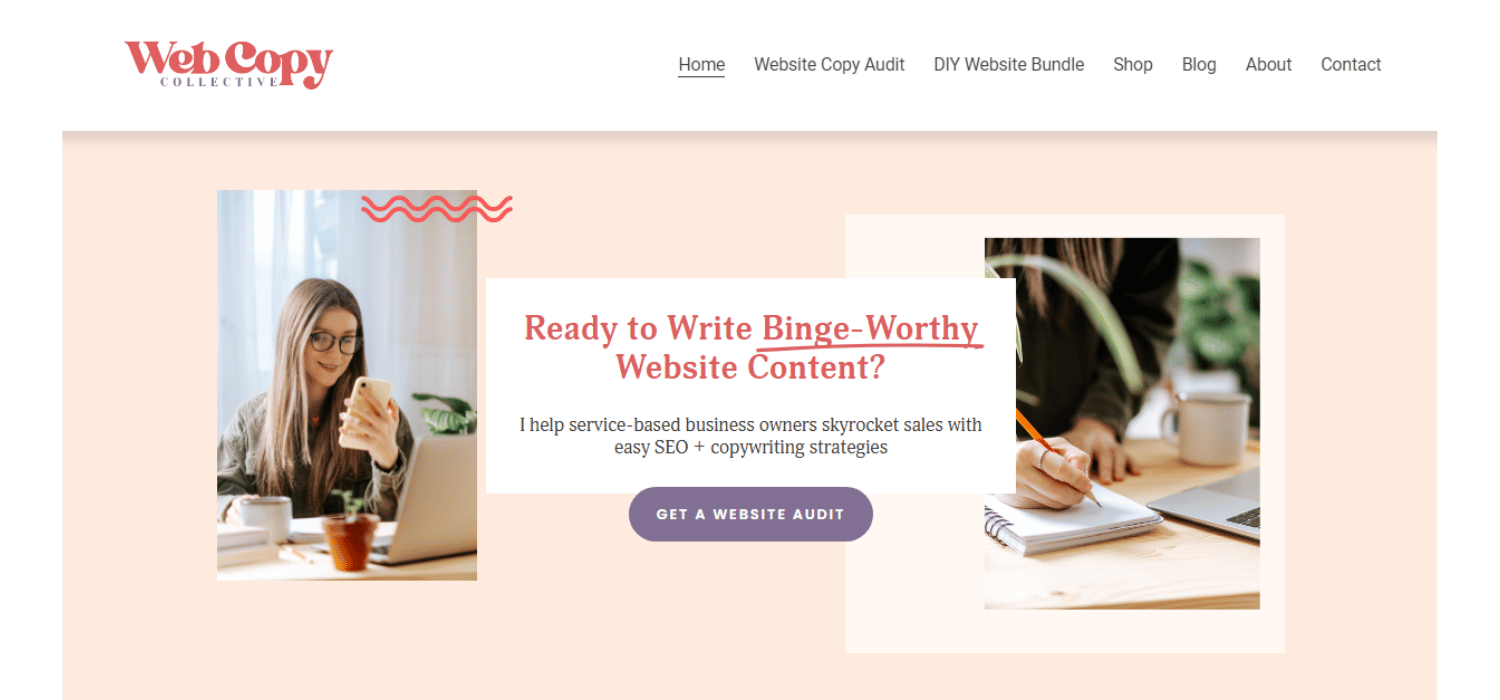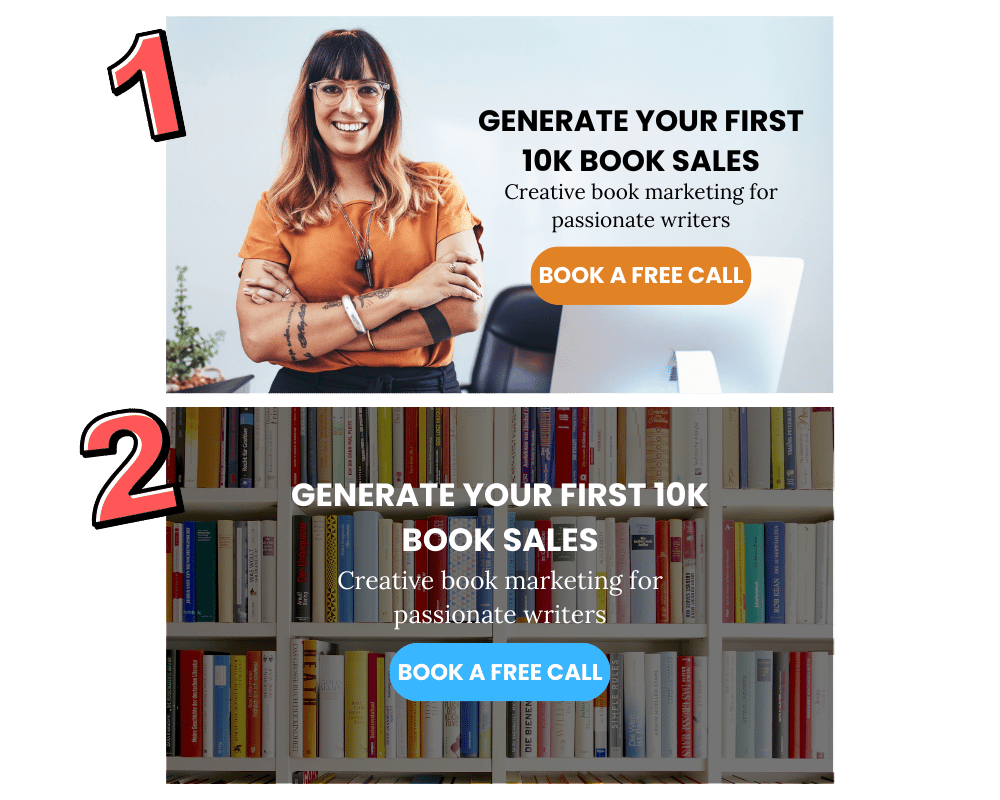Website Content Checklist for Service Providers
If you’re getting frustrated with optimising your service-based website for conversions, you need a website content checklist!
When I first set up a freelancer website back in 2016, it was a hot mess.
I didn’t know what it should include, so it was sparse and confusing, and I spent months changing and tweaking it.
12 rebrands and 46 meltdowns later, I finally got my website optimised and started getting consistent traffic and sales.
But I don’t want you to go through all that stress.
So, to save you hours of time and a lot of headaches, I’m going to give you a full website content checklist that shows you exactly what to include on every page of your website.
What is a Website Content Checklist?
A website content checklist is a complete plan showing you all the elements to include in your website.
If you’re starting a new service-based website from scratch or updating an existing one, having a checklist will make your life so much easier.
Why Do You Need a Website Content Checklist?
So, why do you even need a content checklist? Why not just dive in and start creating pages?
1. Consistency
Your website needs a consistent brand identity and message to draw visitors in. Having a checklist to stick to makes it easier to incorporate branding and your style as you go.
2. Save Hours of Time
Ever gone grocery shopping without a list? You end up doubling back when you miss things, wandering around for longer searching, and you always forget something you really need.
The same is true for a website without a plan. You’ll miss important elements, spend longer tweaking and changing, and never feel quite satisfied you’ve included everything.
3. Feel Confident in Your Website
You need confidence in your website to market your business. If you’re not totally happy with your site, how can you consistently drive traffic to it?
With a full website content checklist, you can feel confident that your website copy has everything you need to showcase your brand and services like a pro.
Related: The Beginner’s Guide to Website Copywriting
The Complete Website Content Checklist for Service Providers
If you’re starting a service website from scratch, use this list as a guide to build out your pages. If you already have a website, go through each page and tick off all the elements to boost your content marketing strategy!
Professional Homepage
Let’s start our website content checklist with the most important page of your website – your homepage.
When I’m doing a website copy review for a client, here’s what I look at:
An H1 title that shows the value you offer and who you work with.
A subheading that interests visitors and highlights the results you help get.
A CTA button for your services
An ‘about you’ section with a photo that introduces you and your brand.
Three offers to your top-priority services, products, or pages.
A freebie opt-in offer with a sign-up form.
Testimonials from previous clients.
Related: How to Write Homepage Copy That Excites Visitors
High-Converting Service Page
Next up, your service page. You should have a dedicated landing page for each of your services.
Strong H1 that tells us what your service is and who it’s for.
An introduction that touches on your client’s pain point.
A strong focus on the benefits of your service, not the features.
A walk-through of the journey of your service and how it works.
Pricing structure.
Testimonials from previous happy clients.
An about you section that shows why you’re qualified to give the service.
An FAQ section to ease any final objections.
A high-contrast, enticing CTA.
An easy sign-up or booking function.
Related: Common Service Page Mistakes to Avoid
Client-Grabbing Product Page
You'll need product pages if you offer digital products or add-ons to your services. A landing page works best for signature products, but you could also have a shop page if you have multiple products.
Either way, each product page should include:
A product name
A time-sensitive offer
Focus on benefits over features.
Professional photos – Etsy is a great place for inspo if you’re not sure what to include
Clear pricing and a secure checkout process
One strong CTA to make visitors buy now.
Interesting About Page
Your About page is one of the most viewed pages on your entire website. Potential clients like to use it to get a peak at the person behind the brand, so this page must stand out.
Here’s your website content checklist for your About page:
Your backstory – how did you start your business?
Professional-looking photos of you (not just cropped selfies!).
Your credentials/qualifications/experience – what makes you qualified?
A freebie opt-in to encourage sign-ups.
Interesting facts about you that add some personality to the page.
Blog round-up to boost clicks and retention rates.
A case study or testimonial from a previous client.
Stats you’ve achieved – people love concrete figures!
A brand timeline to give an interesting visual of your journey.
Links to your social platforms.
An official bio that’s a little more professional for media opportunities.
A CTA to service or offer.
Related: How to Write a Enticing About Page
Value-Packed Blog Page
If you’re not already blogging to market your business, you’re missing out on a limitless opportunity for growth and sales. Blogs drive traffic to your website and can quickly generate a consistent stream of new leads.
On-brand graphic tiles that click through to each blog post.
A “featured” section with your top-performing blog posts.
If you have 50+ blogs, categories to help organise the content.
A sign-up option so visitors can get new blogs straight to their inbox.
Don’t know what to blog about? Here are 26+ blog content ideas for you to steal.
Useful Contact Page
Finally, your contact page doesn’t need to include a lot of content, but there are some important elements you can’t miss:
A simple contact form.
Your email address.
Your location (if applicable – don’t broadcast your home address).
Links to your socials.
An explainer on how best to get in touch with you.
Best Practices for Your Website Content Checklist
Now you know the exact elements you should include on each page, let’s cover some website best practices to make sure you get the most out of your website content checklist.
Create a Brand Board
All of your hard work on website optimisation is pointless if you don’t have a strong, consistent brand.
Look at these two homepage headers – which one is stronger?
They have all the same elements, but the branding is more consistent in the first example.
If you’re struggling with creating a consistent brand, the Website Makeover Bundle has a customisable brand board and walk-through tutorial to help you create a stunning brand for your website!
Think About Your Brand Voice
Imagine you’re writing website content for a single person. Your perfect client has just walked through the door, and you’re going to read your website copy to them as if it were a normal conversation.
If you were talking to them in person, you wouldn’t say, “Copywriting services are a must-have for business owners.”
Well, unless you want to sound like a used-car salesperson.
But you might say, “Copywriting services will save you hours every week, and I know that’s time you’d much rather spend on your client projects!”
Always read your website content out loud and see if it sounds like you. Is it conversational, light, and interesting or stiff, robotic, and sounding like an instruction manual?
Figure out the tone you want to convey on your website, and then write it as if you were speaking to that one person. This is the easiest way to make sure it’s conversational and not salesy.
Craft a Keyword Strategy
Each page on your website needs a unique keyword you want to target.
I like to use Ahref’s Keyword Generator and Uber Suggest to find low-competition keywords for my content.
Type a generic industry keyword into Ahrefs to get a list of potential keywords and traffic levels.
If they all get 10K+ monthly hits, keep narrowing down your search until you find some keywords with lower traffic.
Take one of those niche keywords and enter it into Uber Suggest to get keyword suggestions, traffic levels, and more.
You’re looking for keywords with a Search Difficulty (SD) below 40 — these are the easiest to rank for.
You only get three free searches a day with Uber Suggest, so it’s best to use Ahrefs to narrow down your search first.
Once you have a list of keywords, assign each to a page or blog. Here’s everywhere they should be included:
H1 title
Page title tag
1-2 H2 and H3 titles
Image ALT tags
Meta description
Body content at a 2% density (e.g., 30 keywords for 1500 words)
Link anchor text pointing at the page
If you want to do a deep dive into your website SEO, the SEO Playbook has everything you need!
Website Content Checklist Takeaways
Your website isn’t a one-and-done project. You should constantly improve, update, and optimise your content to get the best results.
But this website content checklist is a great place to start.
Go through each web page and make sure you’ve ticked off every element.
Want some help optimising your service-based website? Book a website copy audit with me, and I’ll show you exactly how to improve your copy, design, and more.






































![Is Grammarly Premium Worth it? [Review]](https://images.squarespace-cdn.com/content/v1/5910c2bec534a5947d4d3130/1739293407789-O7U2NFYVOR0DR6H06Y3N/Delicate+Feminine+Interior+Designer+Featured+Products+Facebook+Post+%2826%29.png)






